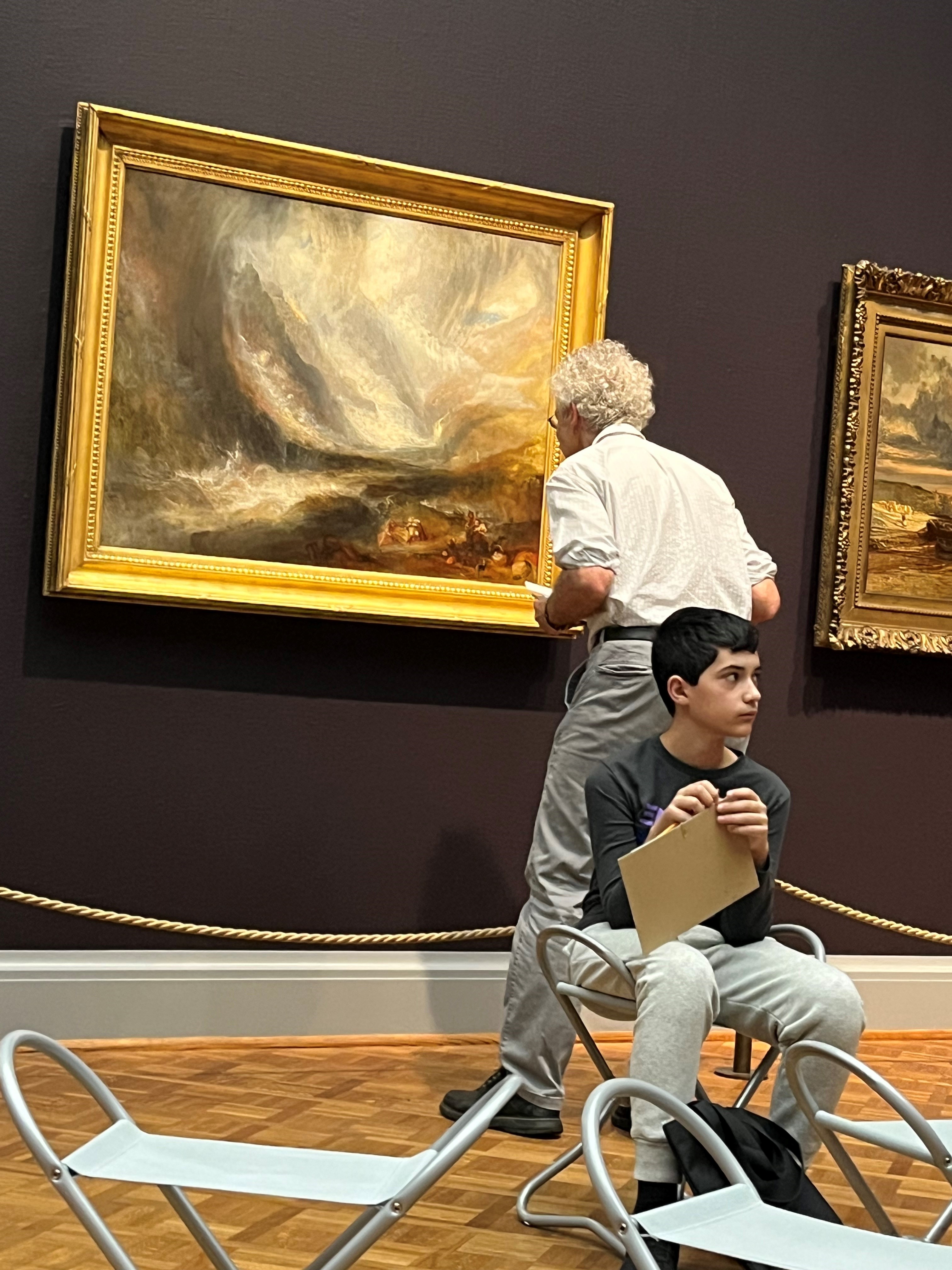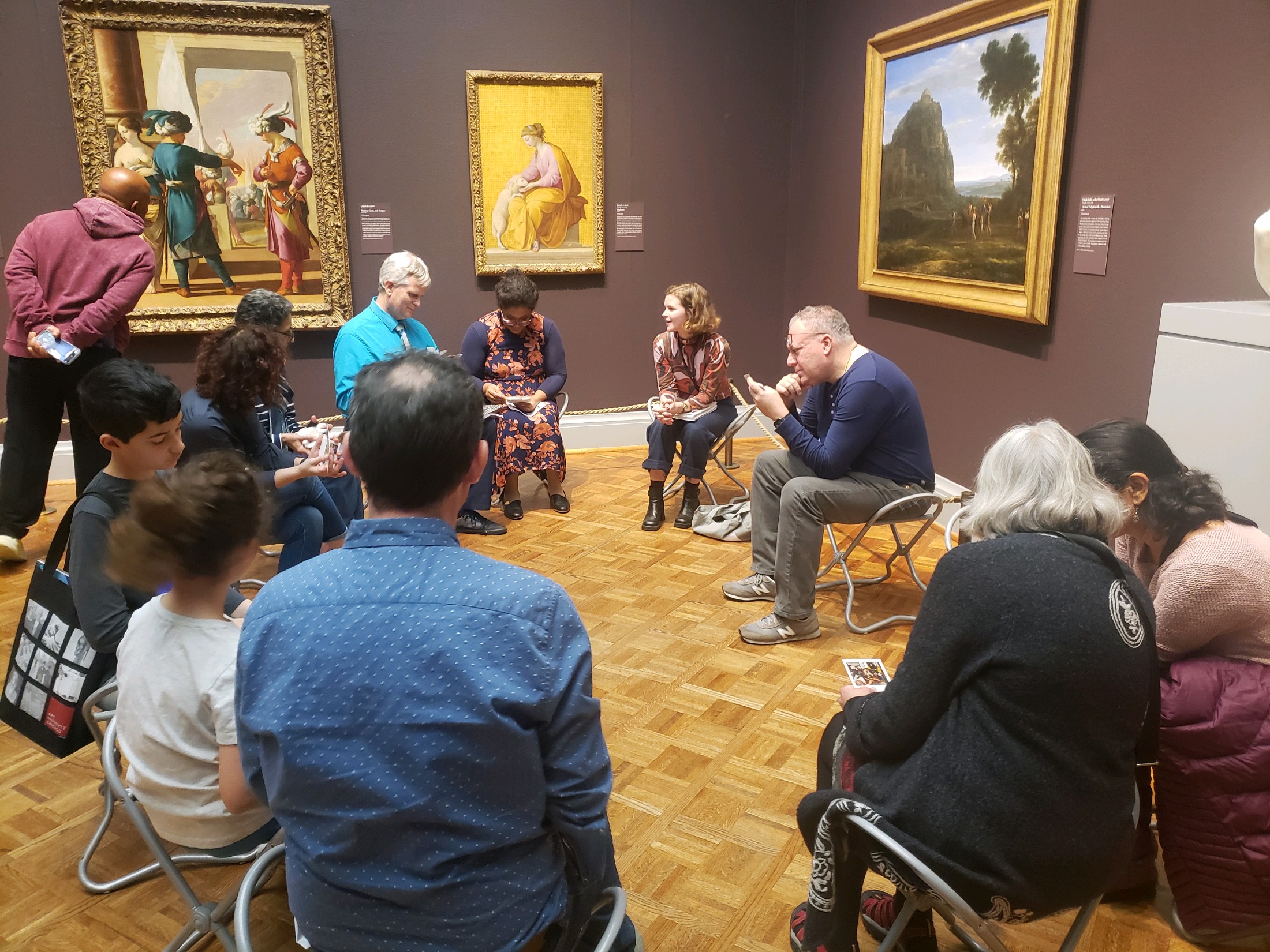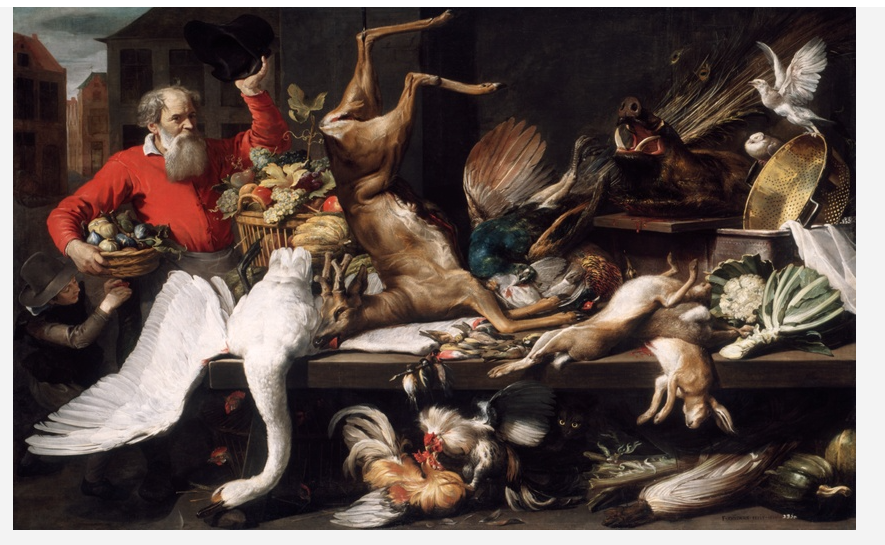Highlights from the Narrative Mindworks members' blog series, featuring headlines and happenings in the world of narrative practices.
By Paul Engelhardt, BS, MFA, Coordinator, Professional Arrangements, Medical Management, Advocate Illinois Masonic Medical Center. Joining the Advocate Narrative Medicine group three years ago re-invigorated Paul’s enthusiasm for writing and storytelling—which he has done professionally throughout Chicagoland. He has an MFA in Theatre/Acting, is a founding member of Strawdog Theatre Company, was past president and board member of Oak Park Festival Theatre, and was the regional director of a national murder mystery theatre company.
What Do You See?

Review this painting. Not just a quick glance but a thorough study of it. What do you think that the woman is thinking about? What emotions come to mind? What time of day?
These were among questions posed to us at The Art Institute of Chicago by Kristen French, Assistant Director of Gallery Activation who led an in-person workshop for the Advocate Health Narrative Medicine group in 2023. For the past four years, Narrative Medicine Group has worked with Sam Ramos, Director of Gallery Activation, Chicago Institute of Art to establish both virtual and in-person collaborative events with the Art Institute.
The History of Narrative Medicine
More about this painting in a bit, but for now, a little background. The Advocate Health Narrative Medicine Program started at Advocate Children’s Hospital in Park Ridge, IL in 2013 by Dr. David Thoele and Dr. Marjorie Getz. Dr. Thoele is a Pediatric Cardiologist and Dr. Getz is the Program Manager for Psycho-Educational Consultation and Evaluation Services, Pediatrics.
Narrative medicine, as a concept, started in 2000 by Internist and literary scholar, Rita Charon, MD. That’s when Columbia University launched the first Program in Narrative Medicine, with programs across the country building on their success ever since .

The Advocate Health Program now in its 12th year. I am a proud member of the program and attend the twice-monthly 60-Minute Mental Makeover meetings regularly, which initially formed as an in-person meeting for interested Advocate Children’s Hospital doctors, nurses and health care professionals. Taking a narrative approach is effective in reducing physician burnout and improving mental wellbeing. While the initial push was for clinicians, it has drawn the attention of hospital administrators (like myself), teachers, painters, sculptors, poets, musicians, journalists, novelists, story tellers – some of whom happen to also be clinicians, and some of whom are full time artists.
With Drs. Thoele and Getz’s connections, The Art Institute of Chicago has been an integral part of the team for the last four years.
— Paul Engelhardt
Narrative Medicine Art Institute Experience
At the Art Institute workshop in 2023, we were initially led to a painting from 1614, “Still Life with Dead Game, Fruits, and Vegetables in a Market.”
Obviously, this piece has a lot. To the group (about 12 of us) the instructor asked, “What’s the first thing you see?” We each went around and talked about different elements. I talked about how it looks like a demented Santa Claus. Others mentioned the swan, the deer, etc.
“Ok. good. What’s the second thing you see?” Again, 12 new images came up, the pickpocket on the left side of the painting, the buildings far behind them in the upper left, a colander, the chickens.
“Nice. Look at something maybe no one else saw.” Once again 12 hidden gems within the original picture. The cat’s eyes under the table, peacock feathers, the tongue of deer sticking out.
In one of the most challenging of the session’s components, we were led to an additional room with multiple, very detailed paintings from the 1800s. We were instructed to pair off. One person was to be ‘the observer’. This person described the painting to the other person, “the artist,” who took the information from the observer and drew it to the best of their ability. After about 10 minutes, you picked a new painting and switched roles.
Discussion ensued after this. Which part was easier? The skill of the artist or the observer may vary widely, and that’s part of the point of the exercise. While the question was not posed directly, there was an understanding of a parallel between seeing a patient and trying to understand what the “observer” is telling you in the process.

The Painting that Saved a Life
Back to that painting we discussed at the beginning. We were asked to review it but not to look at the title of the piece. The instructors asked us to look at the woman, the sky, feel the mood, the time of day. The adjectives we used to describe the mood were forlorn, world-weary, hopeless, fatigued etc. As a group we felt like this was the end of the day, close to quitting time.
The title of the piece is “Song of the Lark” by Jules Breton, painted in 1884. Given the title, we realized that it’s the beginning of the day (larks are morning birds). With that knowledge we began to see that within that look is a small awe for the working class. While things are decidedly not easy for her, she is fully engaged and amazed at the beauty of the sound of the lark.
I have since learned an interesting fact about that painting. Actor and Illinois native Bill Murray, one-time Saturday Night Live star and 2016 winner of the Mark Twain Prize for American Humor, stated that early in his career he was on the verge of suicide. When he saw this painting at the Art Institute, he felt that if the woman in the painting could go on, he could too. He credits this painting with saving his life.

Final Thoughts: How a Painting Helped Me Listen Differently
While old-school physicians thrive on the saying “see one, do one, teach one,” making a connection with patients is more nuanced and intricate. The Narrative Medicine event at the Art Institute was eye-opening for many of the participants who learned things about their patients, their practice and, just as importantly, themselves. Some argue that learning some interesting background on patients doesn’t directly save their lives. Perhaps, but who knew that looking at a painting would save a life and foster an enviable career?
Join Narrative Mindworks
Be part of a global community advancing the power of storytelling in healthcare, education, business, and the arts.
Whether you're a caregiver, educator, writer, or visual storyteller, narrative practices help us connect, heal, and preserve legacy. Join Narrative Mindworks to gain access to exclusive resources, share your story, and grow your impact.
Become A Member – Join Now
